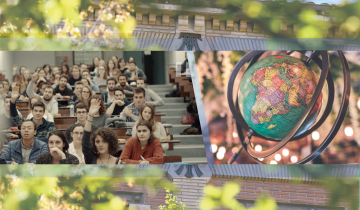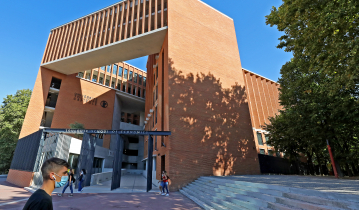Ananya SEN will defend his thesis on Friday, 30th September 2016, 09:00 am Room MS 001 on « Essays in the Economics of the Media and the Internet ». (Supervisor: Paul SEABRIGHT, TSE researcher, University Toulouse Capitole).
Members:
- Karine VAN DER STRAETEN, TSE researcher, University of Toulouse Capitole.
- Sylvain CHABE-FERRET, TSE researcher, University of Toulouse Capitole.
- Yann ALGAN, Research, Sciences Po Paris.
- David STROMBERG, Researcher, University of Stockholm.
Abstract:
This thesis consists of three independent and self-contained chapters, all of which have the economics of the media or the internet as the common unifying theme.
In Chapter I, we ask whether new technologies change the way political markets work in a democracy ? We study the impact of adopting a new technology on campaign contributions received by candidates running for the U.S. Congress. To identify the causal impact of joining Twitter, we compare donations just before and just after politicians open an account in regions with high and low levels of Twitter penetration, controlling for politician-month fixed effects. We estimate that opening a Twitter account amounts to an increase of at least 2-3% in donations per campaign. Moreover, this effect holds only for inexperienced politicians who have never been elected to the Congress before. Placebo checks suggest that this impact is not driven by concurrent increase in information about these politicians in newspapers or blogs, TV ads, or campaign expenditures. The gain from opening a Twitter account is stronger for donations coming from new as opposed to repeat donors, for politicians who tweet more informatively, and for politicians from regions with lower newspaper circulation. Overall, our findings suggest that a new communication technology can lower the barriers to entry in political contests by increasing new politicians' opportunities of informing voters and fund-raising.
In Chapter II, we ask if clicks received by news stories online, independent of story quality, influence the way editors allocate resources to them, and if so, how? Using a unique online news dataset from a large Indian English daily newspaper, we provide evidence that editors expand coverage of stories which receive more clicks initially. To establish a causal link between clicks and coverage, we use a novel instrumental variables strategy exploiting rainfall and power outages as exogenous shocks to reader access to online news. We find that the newspaper responds asymmetrically to clicks received by hard and soft news stories, giving additional coverage only to popular hard ones providing evidence for hard news crowding out soft news and not vice-versa. Finally, we relate our results to firm strategy and the challenge firms face in handling `big data'.
In Chapter III, we examine whether a technology, such as the internet, which increases the set of products available to decision makers, may make the decision makers worse o . We build a model where there is product heterogeneity and decision makers can choose to screen products at a cost. In equilibrium, an increase in the choice set can lower a decision maker's payoff by raising the number of products which, on average, are of lower quality than those which were available earlier. An additional product can impose a negative externality on the decision maker by adversely affecting the statistical quality of its existing product pool. We discuss applications to the phenomenon of attention congestion through advances in digital technology.
Category:
Campus



